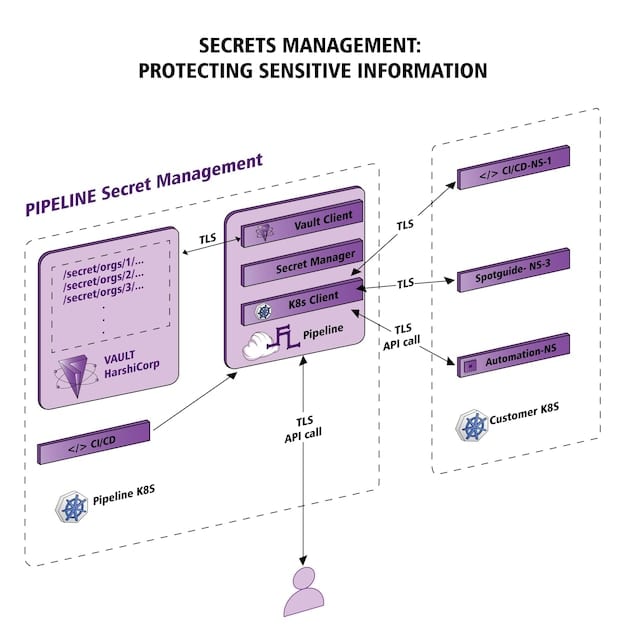Penetration Testing: A Comprehensive Cybersecurity Guide

Penetration testing is a cybersecurity assessment method used to identify and exploit vulnerabilities in a system, network, or application before malicious actors can, allowing organizations to proactively strengthen their defenses.
In the ever-evolving landscape of cybersecurity, staying one step ahead of potential threats is crucial. One of the most effective strategies for achieving this is penetration testing, a proactive approach that simulates real-world cyberattacks to identify and address vulnerabilities before malicious hackers can exploit them.
Understanding Penetration Testing
Penetration testing, often referred to as “pen testing,” is a simulated cyberattack against your computer system to check for exploitable vulnerabilities. It is a crucial component of a robust cybersecurity strategy, allowing organizations to identify weaknesses and strengthen their defenses before real attackers can cause damage.
By mimicking the tactics and techniques used by hackers, penetration testers can uncover security flaws that might otherwise go unnoticed. This proactive approach enables organizations to address vulnerabilities, improve their security posture, and protect their valuable assets.

Why is Penetration Testing Important?
Penetration testing plays a vital role in safeguarding an organization’s data, reputation, and financial stability. There are several key reasons why it is an essential component of any comprehensive security program:
- Identify Vulnerabilities: Penetration testing uncovers weaknesses in systems, networks, and applications that could be exploited by attackers.
- Prevent Data Breaches: By addressing vulnerabilities proactively, organizations can significantly reduce the risk of data breaches and associated financial losses.
- Maintain Compliance: Many regulations and industry standards require regular penetration testing to ensure compliance and protect sensitive data.
- Improve Security Posture: Penetration testing provides valuable insights into an organization’s overall security posture, allowing them to make informed decisions about security investments and improvements.
In summary, penetration testing offers a critical line of defense against cyber threats, enabling organizations to stay ahead of attackers and protect their valuable assets.
Types of Penetration Testing
Penetration testing is not a one-size-fits-all solution. Different types of pen tests are available, each tailored to specific needs and objectives. Understanding the various types can help organizations choose the most appropriate approach for their unique circumstances.
The type of penetration test conducted depends on what the company wants to achieve and the resources available to them. Here are some of the popular types of penetration testing.
Black Box Testing
In black box testing, the penetration tester has no prior knowledge of the system or network being tested. This approach simulates a real-world attack where the attacker has no inside information.
White Box Testing
White box testing, also known as “clear box testing,” provides the penetration tester with complete knowledge of the system or network being tested.
- External Penetration Testing: Focuses on assessing the security of an organization’s external-facing infrastructure, such as websites, email servers, and firewalls.
- Internal Penetration Testing: Evaluates the security of an organization’s internal network and systems, simulating attacks from malicious insiders or compromised employees.
- Web Application Penetration Testing: Specifically targets web applications to identify vulnerabilities such as SQL injection, cross-site scripting (XSS), and other common web application flaws.
- Wireless Penetration Testing: Assesses the security of wireless networks and access points, looking for vulnerabilities such as weak passwords, misconfigurations, and unauthorized access points.
Selecting the appropriate type of penetration testing is crucial for achieving the desired outcomes and effectively addressing an organization’s specific security concerns.
The Penetration Testing Process
Penetration testing typically follows a structured process, which consists of several distinct phases. Each phase plays a crucial role in identifying and exploiting vulnerabilities. Understanding this process can help organizations better prepare for and interpret the results of a penetration test.
Penetration testing is carried out in different stages aimed towards ethical hacking and cyber security practices. Here is an overview of the stages involved in the penetration testing process:

Planning and Reconnaissance
The first phase involves defining the scope and objectives of the penetration test. This includes identifying the systems and networks to be tested, the types of vulnerabilities to be targeted, and the overall goals of the assessment.
Scanning and Vulnerability Assessment
In the scanning phase, the penetration tester uses various tools and techniques to gather information about the target system or network. This may involve port scanning, network mapping, and vulnerability scanning.
- Exploitation: Once vulnerabilities have been identified, the penetration tester attempts to exploit them to gain unauthorized access to the system or network.
- Reporting: After the penetration test is complete, the tester prepares a detailed report that outlines the findings, including the vulnerabilities discovered, the impact of potential exploits, and recommendations for remediation.
- Remediation: The final phase involves addressing the vulnerabilities identified during the penetration test. This may involve patching software, reconfiguring systems, and implementing additional security controls.
By following a structured process, penetration testers can systematically identify and address vulnerabilities, providing organizations with a clear roadmap for improving their security posture.
Penetration Testing Tools and Techniques
Penetration testers rely on a variety of tools and techniques to identify and exploit vulnerabilities. These tools range from open-source utilities to commercial software suites. Familiarity with these tools and techniques is essential for conducting effective penetration tests.
From network mappers to password crackers, penetration testing tools mimic the action of malicious hackers and provide a robust strategy for assessing a company’s cyber security practices. Here are the popular tools that can be used to conduct penetration testing:
Popular Penetration Testing Tools
Several popular tools are used in penetration testing, each with its strengths and weaknesses. Tools can automate certain tasks, but also require a deep understanding of the target they are testing.
- Nmap: A network scanning tool used to discover hosts and services on a network.
- Metasploit: A framework for developing and executing exploit code against a target system.
- Wireshark: A network protocol analyzer used to capture and analyze network traffic.
- Burp Suite: An integrated platform for testing web application security.
Understanding the capabilities and limitations of these tools is crucial for conducting effective penetration tests.
Benefits of Regular Penetration Testing
Regular penetration testing offers several significant benefits for organizations of all sizes. By proactively identifying and addressing vulnerabilities, organizations can strengthen their overall security posture and minimize the risk of cyberattacks.
Regular penetration testing can serve as an advantage for businesses in the following ways:
Improved Security Posture
Regular penetration testing provides a continuous assessment of an organization’s security posture, allowing them to identify and address vulnerabilities before they can be exploited by attackers.
Reduced Risk of Data Breaches
By proactively identifying and addressing vulnerabilities, organizations can significantly reduce the risk of data breaches and associated financial losses.
- Compliance with Regulations: Many regulations and industry standards require regular penetration testing to ensure compliance and protect sensitive data.
- Enhanced Reputation: Demonstrating a commitment to security through regular penetration testing can enhance an organization’s reputation and build trust with customers and partners.
- Cost Savings: Preventing data breaches and avoiding regulatory fines can result in significant cost savings for organizations.
Through regular penetration testing, organizations can create a strong defense against evolving cyber threats.
Challenges and Considerations
While penetration testing offers numerous benefits, it is essential to be aware of the potential challenges and considerations involved. Proper planning, execution, and communication are essential for conducting successful penetration tests.
Even though penetration testing has several uses, there are challenges to it with some considerations such as:
Scope and Objectives
Defining the scope and objectives of the penetration test is crucial for ensuring that the assessment is focused and effective. Organizations should clearly identify the systems and networks to be tested, the types of vulnerabilities to be targeted, and the overall goals of the assessment.
Legal and Ethical Considerations
Penetration testing should always be conducted in a legal and ethical manner. Organizations should obtain proper authorization before conducting penetration tests and ensure that the testing activities comply with all applicable laws and regulations.
- Resource Constraints: Penetration testing can be time-consuming and resource-intensive. Organizations should allocate sufficient resources to ensure that the testing is conducted thoroughly and effectively.
- Impact on Operations: Penetration testing can potentially disrupt normal business operations. Organizations should carefully plan the testing activities to minimize disruption and ensure that systems are restored to their original state after the testing is complete.
By carefully considering these challenges and incorporating them into the planning process, organizations can effectively manage the risks associated with penetration testing.
| Key Point | Brief Description |
|---|---|
| 🎯 Vulnerability Identification | Finding weaknesses before hackers do can safe guard from potential attacks. |
| 🛡️ Risk Reduction | Regular testing minimizes the risk of data breaches and financial losses. |
| ✅ Compliance | Meeting regulatory requirements ensures data protection and trust. |
| 📈 Improved Posture | Continuously assessing security boosts resilience to threats. |
Frequently Asked Questions
▼
The main goal is to identify and exploit vulnerabilities in a system to improve security. It helps organizations understand their weaknesses before malicious actors do.
▼
Penetration testing should be performed regularly, ideally at least once a year. Additionally, it should be conducted after significant changes to the network or applications.
▼
Vulnerability scanning identifies known vulnerabilities, while penetration testing goes a step further by actively exploiting those vulnerabilities to assess their impact.
▼
Skills include networking knowledge, operating system expertise, security tools proficiency, and ethical hacking techniques. Continuous learning is also essential in this field.
▼
Penetration testing helps ensure organizations meet industry and legal standards by identifying security gaps. It provides evidence of proactive security measures, aiding compliance efforts.
Conclusion
In conclusion, penetration testing is an indispensable tool for organizations striving to maintain a robust cybersecurity posture. By proactively identifying and addressing vulnerabilities, organizations can significantly reduce the risk of cyberattacks, protect their valuable assets, and ensure the confidentiality, integrity, and availability of their data.





